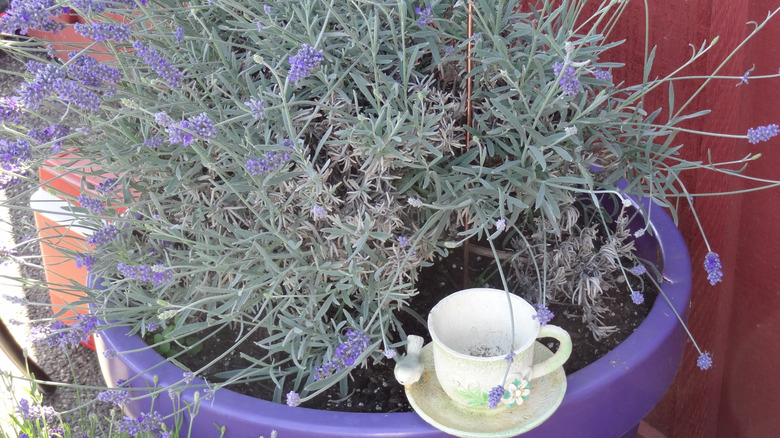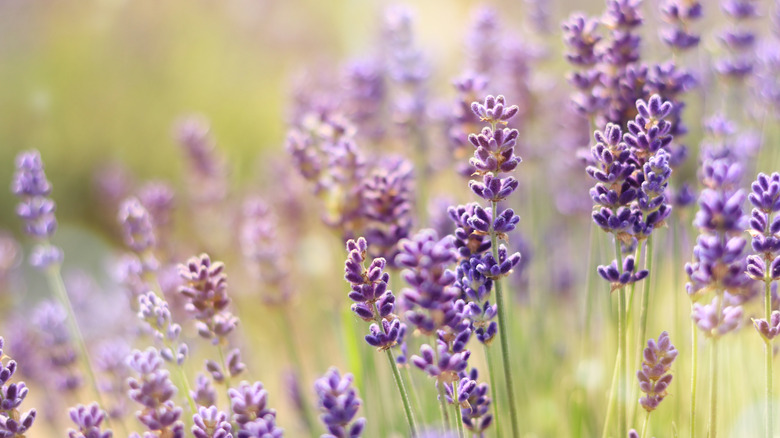Lavender Plants Not Blooming? Here's A Simple Fix That Could Change Everything
In 2020, the National Garden Bureau named lavender (Lavandula spp.) its perennial of the year, citing its "texture, scent, attractiveness, and overall usability." The plant's flowers and foliage are used in aromatherapy, cooking, essential oils, candle making, and a host of other applications. Lavender is also prized for its beauty in the garden and as an element of a bouquet. But what if your carefully-tended plants aren't blooming?
Like almost all herbs and most flowering plants, lavender needs lots of sun to thrive. Without enough sun, plants become leggy, drop their leaves, or simply fail to produce flowers. Spend some time in the garden observing how much light your plants get. If they get at least six hours of full sun, then lack of light is not the problem. Keep in mind that shade from buildings or trees may block the plants as the day progresses. If you're planning a new garden, build a sun map to that shows what spots get the most sun at different times of the year.
Solving the problem of lavender not getting enough sun when it's grown in containers is easy—just move the pots. Garden plants are more difficult to accommodate, but it's essential that you move them or prune back whatever is shading them if you want them to produce healthy flowers. Prepare the new sunny location, dig up the old plant and its root ball, and put it in its new spot, preferably in the fall. Water it thoroughly when you transplant it, and after that, water when the top couple of inches of soil dry out.
Growing lavender in the right spot
Of the more than 450 varieties of lavender spread across 45 different species, English lavender (Lavandula angustifolia) is the hardiest and best known. The sun-seeking evergreen perennial, native to the Mediterranean, is hardy in zones 5 to 9. Bushy plants grow about 2 feet tall and 3 feet wide, producing flowers on long stalks in the summer. Whether lavender is grown in containers or planted in the garden, the aromatic flowers, seeds, and foliage are a welcome addition to the landscape, scenting the air and attracting pollinators.
In addition to plenty of sun, lavender needs neutral to alkaline soil with very good drainage. The sunny spot you've chosen doesn't need to get six hours of continuous sun, it just needs six hours in total each day. Lavender does best in sandy or loamy soil, but it's also a good candidate for a rock garden.
Having "wet feet" is another reason lavender fails to thrive, so make sure your container or garden plot never stays wet. If you're planting in the garden, incorporate organic material into the soil to keep your lavender plants happy and healthy. Fill containers with potting soil supplemented with organic material, and plan to repot the lavender every year in progressively bigger pots with fresh soil. Mature lavender plants are drought-tolerant, but until then they need regular watering. While lavender can be propagated from seed, it's easiest to grow new plants from cuttings.

